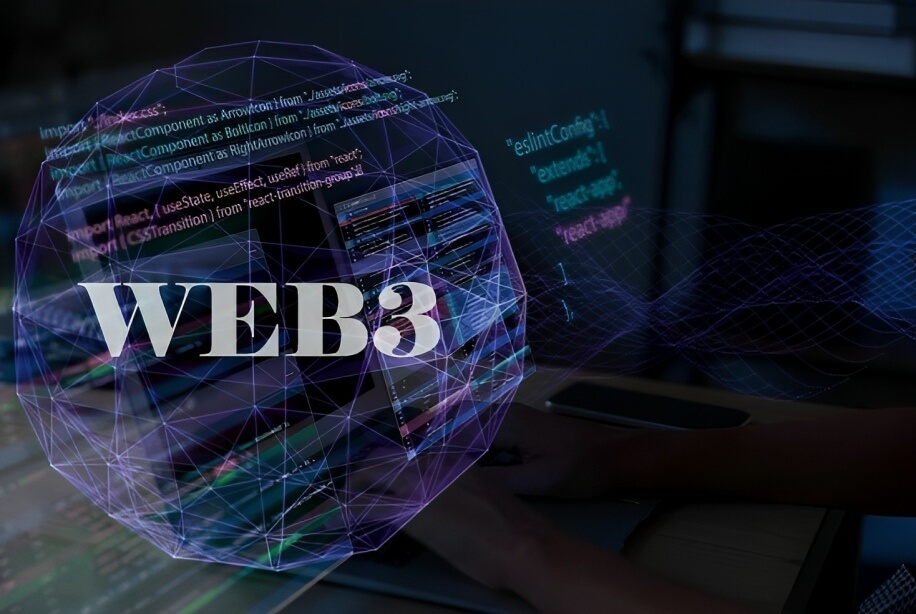Your marketing tract is leaking and you don’t even know that!
Think about it. You have spent hours preparing the right campaign, catching ads and fixing your site. But you’re effectively tossing darts into the dark if you can’t keep track of what’s truly occurring.
Don’t worry! Fortunately, digital analytics is easier to use and doesn’t require you to be an expert in technology.
With the right tools and strategies, you can connect these leaks, elevating services, optimize the funnel and change potential customers to dedicated brand champions..
In this blog, we’ll guide you on leveraging digital analysis to achieve this goal.
Are you ready to estimate and start growing? Let’s dive
| Table of Content: 1. Understanding the Marketing Funnel 2. Key Digital Analytics Metrics for Each Funnel Stage 3. How to Collect and Analyze Marketing Data 4. Optimizing Each Funnel Stage with Digital Analytics 5. Common Mistakes to Avoid in Funnel Optimization 6. Best Tools for Digital Analytics & Funnel Optimization 7. Conclusion |
Understanding the Marketing Funnel
The Marketing funnel is a framework that shows how customers connect to your business. This is more than just a theoretical idea. This is the way that teaches the audience about you as long as they become dedicated followers. The catch is that you lose lots of the opportunity to expand your company if you are not employed in digital analysis to understand and improve that trip.
Let’s dissect it in their traditional stages:
1. Awareness: The First Spark
This is where potential buyers learn about your brand.
Maybe they heard about you from a friend, clicked on a Google ad or on your post on social media. At this point, your purpose is to capture their interest and leave a permanent impression. However, how can you decide that your bet is effective? Digital analysis service can help with it.
It helps you respond to request as:
- Who is interacting with your company? Are you speaking to the appropriate people?
- Which networks are the most popular? Is it recommendations, search engines, or social media?
You are just making assumptions if you don’t have analytics. Furthermore, guessing is a risk rather than a strategy in the market today.
2. Consideration: The Evaluation Phase
Customers move into the contemplation phase after learning about your business.
In this case, they are assessing your products and contrasting them with those of your rivals. They may join up for a free trial, see your sample videos, or read your blog entries. This is the difficult part. They will leave and most likely never return; if your website is difficult to use or your material isn’t interesting.
You may identify these problems by using digital analytics to get answers to queries like:
- Are guests staying? How long do visitors stay on your site, and what is your bounce rate?
- Do they interact with your material? Are they departing right away or are they clicking over to other pages?
You can identify what works and what doesn’t by keeping an eye on these data, which will help you make wise adjustments.
3. Conversion: The Moment of Truth
The real action takes place here. The conversion phase occurs when a potential customer becomes a paying one.
They can buy your goods, subscribe to your service or take other important measures. However, even a small mistake can be thrown out completely. Maybe your box page is very misleading, otherwise your Call-to-Action (CTA) is ineffective.
Digital analysis helps you identify these issues by answering you questions:
- Do individuals take the desired action? What is your conversion rate and how do they glide?
- How is your sales funnel? How much do you pay to get a customer and what is your return on the investment (ROI)?
By analyzing this data, you can customize the funnel to maximize conversion and reduce waste expenses.
4. Retention: The Loyalty Loop
The journey doesn’t end at the sale.
In fact, it is important to maintain existing customers as to achieve new people. Finally, it is much cheaper to maintain current customers than to get new people. Your goal at this point is to transform one-time consumers into loyal consumers and ardent logo advocates
You can do this using digital analysis by answering such questions:
- Are consumers still loyal? How much is your Churn speed and how can it be reduced?
- Is your brand used by them? Do they connect your content, visit your site or open your e-post?
- Do they come back to buy more things? How many times do you get a business to repeat and how can you increase it?
By tracking it, you can see opportunities to increase customers’ happiness and create long -lasting loyalty.
As Neil Patel, a main digital advertising and marketing expert, places it:
“Data is vain without context. The key’s to consciousness on the metrics that align with your commercial enterprise desires and take movement primarily based on what the numbers are telling you.”
| Key Takeaways: Metrics to Track at Every Funnel Stage 📌Awareness: Are You Reaching the Correct People? 📌 Consideration: Are You Maintaining Prospect Engagement? 📌 Conversion: Do you maximize ROI? 📌 Storage: Does the storage help you create long -term loyalty? To see how many times customers return to more, check the repetition frequency. |
How to Gather and Examine Marketing Information
Data collection is simple; the difficult part is interpreting it. Here’s the proper way to accomplish it:
1. Using Web Analytics Tools (Google Analytics, Adobe Analytics, etc.)
Web analytics solutions are crucial for monitoring and assessing user activity, campaign efficacy, and website performance.
Steps to Collect and Analyze Data
- Installing tracking codes (such as the Google Analytics tag) on your website or app is the first step in setting up tracking.
- Next, set up objectives and conversions, such purchases or form submissions.
- Remember to specify UTM parameters so that campaign performance may be tracked.
Important Metrics to Track
- Traffic sources: Identify the source of your traffic, whether it is social media, sponsored advertising or biological discovery.
- Rejection rate: Determine what relationship between visitors deviates on your site without interaction.
- Conversion Rate: Monitor the proportion of users who finish the intended tasks.
- Average Session Duration: Learn how long visitors spend on your website.
- Pageviews: Determine which pages get the most traffic.
Advanced Analysis
- Segment data according to user demographics, devices, or habits.
- Create specialized reports and dashboards to focus on particular KPIs.
- To determine when customers stop throughout the conversion process, employ funnel analysis.
2. Tracking of user behavior (Heatmap, Session Recording, A/B Test)
Understanding how users interact with your site or app helps users to customize the experience and improve the conversions.
Heatmaps
- What they do: Imagine the user clicking on one page, scrolling and hovering.
- How to Use:
- Identify high-engagement areas and optimize CTAs (Call-to-Actions).
- Detect areas where users get stuck or ignore content.
Session Recordings
- What They Do: Record real user sessions to observe behavior.
- How to Use:
- Determine any usability problems (such as unclear navigation or broken links).
- Recognize how users engage with menus, forms, and other components.
A/B Testing
- What it does: Compare two or more versions of a website or item that performs better to determine it.
- How to Use:
- Test variations of headlines, CTAs, images, or layouts.
- Use statistical significance to ensure results are reliable.
- Implement winning variations to improve conversion rates.
3. Attribution Modeling (Multi-Touch Attribution, First-Touch vs. Last-Touch)
Understanding which marketing channels and touchpoints influence conversion is made easier with the use of attribution modeling.
Types of Attribution Models
- First-Touch Attribution: Credits the first or primary interaction a customer had with your brand.
- Last-Touch Attribution: Credit the final interaction before the conversion.
- Multi-Touch Attribution: Distributes credit in several touch points (eg linear, time, position-based).
How to Use Attribution Modeling
- Analyze which channels (eg e -post, social media, paid ads) run the most conversion.
- Consequently, identify the underperforming channels and the Realsets budget.
- Use tools like Google Analytics or Adobe Analytics to compare different attribution models.
4. Analyzing Customer Journeys (Identifying Drop-Off Points, Optimizing CTAs)
You can find obstacles and improve the conversion rate by having a thorough understanding of the consumer experience.
Methods for Examining Customer Journeys
- Map the Journey:
- Identify the most important touch points (eg landing page, product page, checkout).
- Use tools like Google Analytics or CRM data to imagine the trip.
- Identify Drop-Off Points:
- Analyze funnel reports to see where users abandon the process.
- Investigate reasons for drop-offs (e.g., slow loading times, unclear CTAs).
- Optimize CTAs and User Experience:
- Test different CTA placements, colors, and copy.
- Simplify forms and reduce the number of steps in the conversion process.
- Provide clear value propositions and address user concerns.
Tools for Customer Journey Analysis
- Google Analytics (Behavior Flow, Goal Flow reports).
- CRM platforms (e.g., Salesforce, HubSpot).
- Customer journey mapping tools (e.g., UXPressia, Touchpoint Dashboard).
5. Best Practices for Collecting and Analyzing Marketing Data
- Define clear goals: Learn what you want to achieve (eg, increase conversion, reduce the rejection rate).
- Use multiple devices: Mix web analysis, heat map and A/B test for a general view.
- Mark the data quality: Make sure the tracking code is used correctly and the data is accurate.
- Review the data regularly: Continuously monitor performance and make data-handled decisions.
- Testing and repetition: Use insight to optimize campaigns and test new strategies.
Optimizing Each Stage of the Funnel
Here’s how to optimize each stage:
1. Improving Awareness: Get the Right People in Your Funnel
- Use the audience’s insight to limit targeting.
- Test separate ads creative and reports of it reflect.
- Customize the SEO strategy based on display data.
2. Enhancing Consideration: Keep Prospects Moving Forward
- Fix high-exit pages with better design or content.
- Customize email campaigns based on user behavior.
- Offer leads or resources to care for the possibilities.
3. Boosting Conversions: Reduce Friction & Build Trust
- A/B Test landing page to find the best designed designs.
- Simplify your checkout process to minimize drop-offs.
- Use retargeting ads to bring back lost visitors.
4. Maximizing Retention: Turn Customers into Advocates
- Use future analyzes to identify risky customers before you grind.
- Send personal recommendations to encourage repeat purchases.
- Engage customers post-purchase with loyalty programs or educational content.
Common Mistakes to Avoid in Funnel Optimization
Avoid these pitfalls to make sure your funnel optimization efforts are powerful:
- Ignoring Data-Driven Decision-Making:
- Rely on records, not assumptions, to manual your strategies.
- Over-Relying on Vanity Metrics:
- Focus on actionable metrics (e.G., conversion rate, retention charge) in place of conceitedness metrics (e.G., pageviews, likes).
- Not Segmenting Data Properly:
- Segment data via demographics, conduct, or supply to benefit deeper and modern insights.
- Failing to Test and Iterate:
- Continuously take a look at and refine your techniques based totally on effects.
Best Tools for Digital Analytics & Funnel Optimization
To effectively adapt the marketing funnel, you need strong equipment for user behavior, promotional performance and customer journeys to provide actionable insights into travel. Below is a large observation of top units, where their key features, cases of use and how they can help you in each funnel stage:
1. Google Analytics 4 (GA4)
Important features:
- Despite platform tracking (web, app and offline).
- Event -based tracking for detailed user interactions.
- Predictive analysis (eg, probability, revenue forecast).
- Adaptation report and dashboard.
- Integration with Google advertising, search console and BigQuery.
Use cases:
- Awareness: Track the execution of traffic sources and campaign.
- Ideas: Analyzes User behavior on larger pages (eg blog, product page).
- Conversion: Set and monitor goals and tracking of e-commerce.
- Storage: Use Future -Stole matrix to identify risk users.
2. Adobe Analytics
Key Features:
- Attribution modeling (such as algorithmic, first-touch, and last-touch).
- Analysis of customer journeys using pathing technologies.
- Insights and anomaly detection powered by AI.
- Adobe Experience Cloud integration.
Examples of Use:
- Awareness: Evaluate how well multi-channel advertising is working.
- Take into account: Find high-exit sites and improve the content.
- Conversion: Examine funnel drop-offs and make conversion pathways as efficient as possible.
- Retention: Monitor engagement indicators and customer lifetime value (CLV).
3. Hotjar
Key Features:
- Heatmaps to visualize clicks, scrolls, and mouse movements.
- Session recordings to watch real user interactions.
- Surveys and feedback polls to gather user insights.
- Funnel analysis to identify drop-off points.
Use Cases:
- Awareness: Understand how users interact with landing pages.
- Consideration: Identify usability issues on key pages.
- Conversion: Optimize CTAs and forms based on user behavior.
- Retention: Gather feedback to improve user experience.
4. HubSpot
Key Features:
- Marketing automation with built-in analytics.
- CRM integration for end-to-end funnel tracking.
- Email marketing, lead scoring, and campaign tracking.
- Customizable dashboards and reports.
Use Cases:
- Awareness: Track campaign performance and lead generation.
- Consideration: Personalize content and email marketing.
- Conversion: Monitor lead-to-customer conversion rates.
- Retention: Automate follow-ups and track customer engagement.
5. Mixpanel
Key Features:
- Event-based tracking for detailed user behavior analysis.
- Funnel analysis to identify conversion bottlenecks.
- Retention analysis to measure user engagement over time.
- A/B testing for optimizing product features.
Use Cases:
- Awareness: Track user acquisition channels.
- Consideration: Analyze how users interact with key features.
- Conversion: Optimize onboarding flows and feature adoption.
- Retention: Measure retention rates and reduce churn.
6. Amplitude
Key Features:
- Behavioral analytics to track user actions.
- Cohort analysis to measure retention and engagement.
- Path analysis to understand user journeys.
- Predictive analytics for forecasting user behavior.
Use Cases:
- Awareness: Analyze how users discover your product.
- Consideration: Identify patterns in user behavior.
- Conversion: Optimize conversion funnels and feature usage.
- Retention: Predict churn and improve user retention.
7. Other Notable Tools
- SEMrush: For SEO and competitive analysis (awareness stage).
- Optimizely: For A/B testing and experimentation (conversion stage).
- Kissmetrics: For customer journey and retention analytics.
- Tableau/Power BI: For advanced reporting and data visualization.
Conclusion
The basic conclusion is that digital analysis is about using the data to make informed decisions, not merely gathering statistics.
- Focus on that matter.
- Adapt each step in the funnel depending on the actual user behavior.
- Testing, refined and developed the funnel has ever been “done”.
Your next step? Dive into your analysis today, identify weak spots and start making date-driven improvements.



